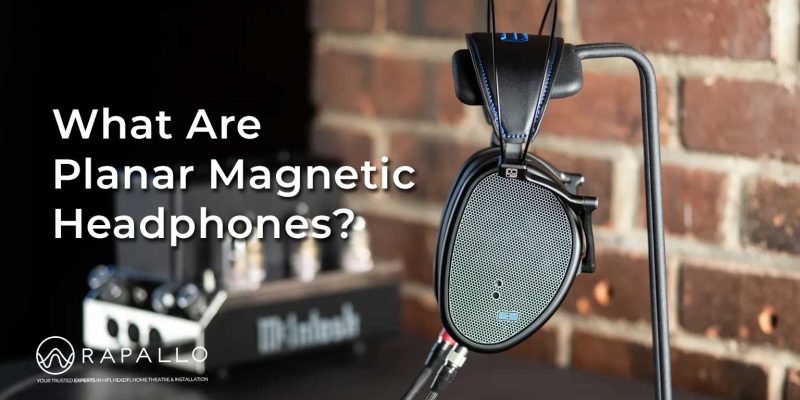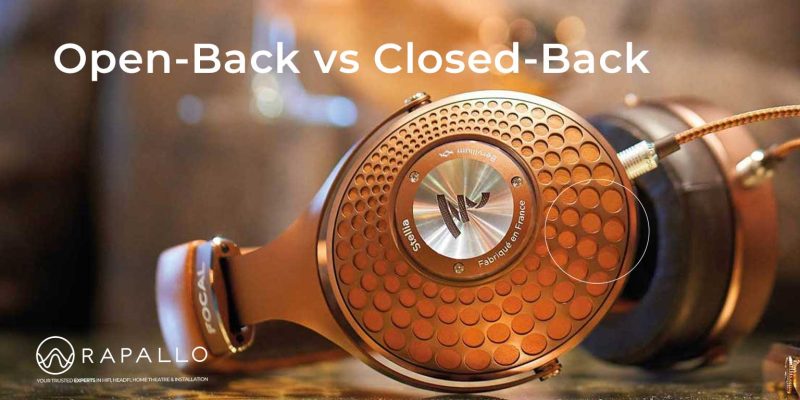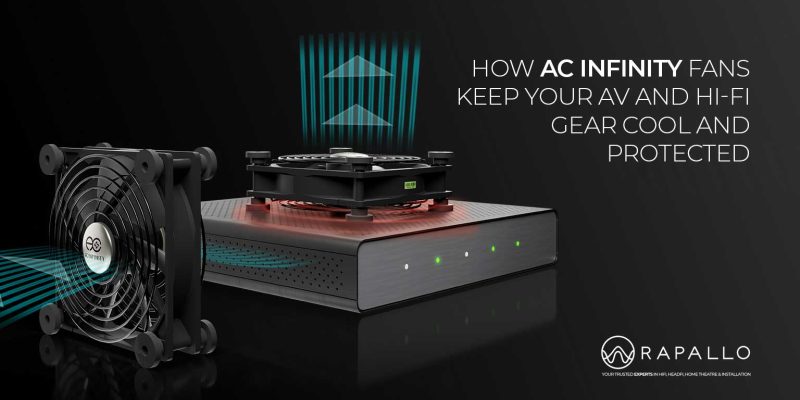
Everything you need to know about sound bars
Estimated reading time: 8 minutes
Everything you need to know about sound bars… at Rapallo, we love discrete multi-channel goodness. Unfortunately, we also understand that there are times when a full discrete multi-channel surround setup isn’t practical.
Don’t despair!
There is life beyond the tiny sound of tv built-in speakers for those of us who are in this situation. The solution is a sound bar and they are an excellent compromise if you consider yourself appreciative of a certain level of quality without being a ‘purist’.
Are there problems with and limitations to sound bars? Well there certainly are limitations, but the problems can be avoided with a little know how. Here’s what you should know before you make the jump to buying a sound bar.
The first thing to do when setting off on your mission of acquiring a sound bar is defining your expectations. Do you want a low-cost bar that simply amplifies your TV sound? Or do you want immersive home theater sound without the 5.1 speaker system? A bigger investment can get you sound quality that’s approaching a full home theater system.
Secondly, think about where your new sound bar is going to live. How big is the room? How big is the TV you’re pairing it with? Big rooms and big TVs call for big sound bars. Compact models are great for smaller rooms and TVs, of course.
Will your sound bar also be your primary speaker for music? Look for a bar with high-grade speaker components and powerful amplification. Many sound bars offer wireless connectivity, and some even give you multi-room system capability.
Active or Passive – Everything you need to know about sound bars?
The first thing you need to do is decide whether you want an active or passive sound bar. If easy set-up and a clean look is what you are after, active sound bars are your answer. They house everything you need in one box: speakers, amplification and signal processing. You simply connect your sources directly to the sound bar, and you’re good to go. You don’t have to add any additional electronics, except perhaps a subwoofer – although many of the newest active models come with a subwoofer. A multitude of options exist in the active category, covering a wider range of price points. As a matter of fact, it takes some digging to find a sound bar that is not in this category.
If flexibility on the other hand is your priority, you should look into passive sound bars. A passive sound bar is similar to a traditional speaker in that you need to power it with an external amplifier or AV receiver, and it does not include any digital signal processing or inputs (beyond traditional speaker-wire connectors). In other words: you can choose your own receiver/amplifier, connect more (and more types of) sources, decode more audio formats, and experiment with different crossover settings to find the best blend between subwoofer and sound bar. The tradeoff for that flexibility is a more complicated setup process that requires some basic knowledge of home theater principles; also, you lose the sleek, all-in-one design of the active sound bar.
You guessed it, the fact that your av receiver/amplifier and subwoofer are external does benefit the sound experience, providing a more natural sound but also makes it a more expensive option. If this is your option of choice, we recommend having a look at the both excellent Definitive Technology Mythos Series and Klipsch Gallery series.
How Many Channels – Everything you need to know about sound bars?
Choices range widely; options start at a two channel budget sound bar that is designed to provide a basic alternative to your tv speakers. And just to make this totally clear: you will improve your sound experience considerably by adding even the most basic sound bar.
One step up are the 3 channel options where you get dedicated left, center and right channels. This usually comes with the option to connect separate surround speakers for a true surround sound presentation (‘Sound bar hybrid’), which is definitely not a bad idea to consider.
And finally, there’s the five- or seven-channel sound bar designed to reproduce multi-channel soundtracks. These types of sound bars usually tweak timing and volume to trick the ears (DSP) or bounce sound off on the walls to create a greater sense of surround envelopment than you get from the two- or three-channel bars.
The effectiveness of this “surround sound” varies widely per model, but it’s good to be aware that they rarely replicate the level of immersion that you get from discrete surround speakers. In the best-case scenario, they’ll widen the sound field so the sound bar sounds bigger than its size.
However,… there is the Yamaha YSP surround sound series that has reviewers consistently baffled with its amazingly real surround sound. Especially the Yamaha YSP-2500 ‘Sound Projector’ with Bluetooth and wireless subwoofer should be high on the list of anybody considering a sound bar at a midrange budget. If your budget is at a high end also look into the Yamaha YSP-4300 Digital ‘Sound Projector’.
Consider placement options before you buy – Everything you need to know about sound bars.
There are basically three options when it comes to this consideration: The sound bar goes on the tv stand, the tv sits on top of the sound bar (called a ‘sound base’) or the sound bar is wall mounted.
If you’ll be placing the sound bar on the TV stand, make sure there’s enough room in front of the set especially if you opt for a fairly bulky sound bar, and check to see that it will not block the remote-control beam to the TV.
The Yamaha YSP models have a nifty IR repeater on the back, so it accepts remote commands from the front of the sound bar and passes them through the TV behind it.
If space is tight, consider a ‘sound base’ that will sit on the stand under the TV. It means you don’t have to deal with wall-mounting or worry about placement. They are also a great option if you’re looking for full-spectrum sound without a separate subwoofer (more on that later).
The important thing is to make sure the sound base can support the weight of your set. Also be sure it sits fully on your TV stand and is wide and deep enough for the TV’s base or legs.
ZVOX are the creators of this concept and great budget options. Our favorites however are the SpeakerCraft CS3 Sound Bar and the Yamaha SRT Sound Bar series.
A third option is to wall-mount a sound bar mounted right under your tv making for an elegant setup. Obviously the downside is that you’ll need to consider how you’ll hide the power cord and connection cable.
The Definitive Technology Mythos series (passive), the Focal Dimension sound bar and the Klipsch HD Theater R 20 B sound bar come with wall brackets to allow for the option of wall mounting.
Will you need a separate subwoofer?
A subwoofer is a speaker dedicated to reproducing only the lowest bass frequencies. Most sound bars are too slim to reproduce lower-frequency sound, so in many cases a separate subwoofer is included in the package so you can enjoy tv and movie sound the way it was meant to be heard. If you like action movies, video games, or tv programs that have a lot of bass, a sound bar/subwoofer package is the better option.
Passive sound bars can’t do without an additional subwoofer.
Most of the subwoofers included in a sound bar package are wireless. They only need to be plugged into a wall outlet for power, and the low frequency sound they produce is more or less non-directional, so you’ve got plenty of placement flexibility.
If you don’t have room for two separate pieces but still want good bass response, we recommend a sound base over a slim sound bar. The sound base house allows for larger woofer drivers and gives them plenty of room to resonate.
Connections and Control
When choosing a sound bar, make sure you pick one with the right connections for your TV and other components.
Most home theater gadgets these days’ use HDMI, but that doesn’t mean you necessarily have or need HDMI ports on your sound bar. Instead, you can connect all your home theater devices directly to your TV, then use the TV’s audio output to connect to the sound bar. That way when you switch inputs on your TV, you’ll also be switching what audio is sent to your sound bar.
Look for analog inputs if you’ll be connecting older gear to the system, and one or more HDMI inputs for newer gear.
Look for a sound bar that supports Bluetooth if you want to connect to mobile devices (a tablet, phone, or computer, e.g.) directly so you can listen to music or play videos without having to route them through your TV.
Look for one with Wi-Fi if you want to be able to access online content directly through the sound bar.
For the latest 4K Ultra HD TV, there are 4K video compatible sound bars like the Yamaha YSP-1600 and the Yamaha SRT-1500 available.
Conclusion – Everything you need to know about sound bars
There are plenty of excellent sound bar models out there to choose from and we hope this blog is helping you to find the sound bar, or sound base that’s best for you. A lot obviously depends on your personal situation, budget, preferences etc. If this blog is still making you scratch your hair in puzzlement, give us a ring and we’re sure we can help you clarify a thing or two.
The Rapallo Team
- Ground Cables and TurntablesGround Cables and Turntables, time to separate electrical fact from audiophile folklore – at least we will try. Among the…
- What Are Planar Magnetic Headphones?So what are Planar Magnetic Headphones? Here is our guide for curious HeadFi listeners. If you’ve spent any time browsing…
- Open-Back vs Closed-BackAh, headphones and Open-Back vs Closed-Back… Your loyal companions through late-night jam sessions, endless Zoom calls, and those “I’m totally…
- Our Guide to Buying a CD PlayerOur Guide to Buying a CD Player. What to look for in today’s market and why CD Players still matter.…
- The Moving Coil Cartridge: History, Design, and Why It Still Reigns SupremeVinyl playback is a ritual. From lifting the record out of its sleeve, to lowering the stylus onto the spinning…
- How AC Infinity Fans Keep Your AV and Hi-Fi Gear Cool and ProtectedHow AC Infinity Fans Keep Your AV and Hi-Fi Gear Cool. When you invest in a high-performance home theatre or…
- Chip DACs vs. Ladder DACsIn the digital age, analog outputs still matter. Whether you’re enjoying high-fidelity music, sensing voltages in a control system, or designing precision instrumentation, converting digital signals into analog voltages is a critical step.
- Are Blu-ray Players Still Worth It in 2025?This week we discuss Are Blu-ray Players Still Worth It in 2025? In an age where digital streaming dominates entertainment, the humble Blu-ray player often seems like a relic of the past. But in 2025, despite the surge in subscription services and cloud-based content, Blu-ray players remain relevant—and for good reason
- Understanding Banana Plugs: Are They Worth Using for Your Speakers?This week we talk about understanding Banana Plugs: are they worth using for your speakers? If you’ve recently set up a home theatre system or upgraded your audio gear, you’ve likely come across the term banana plugs








